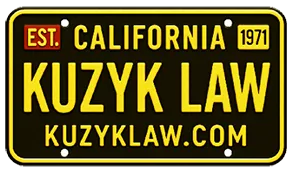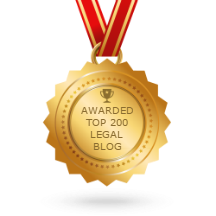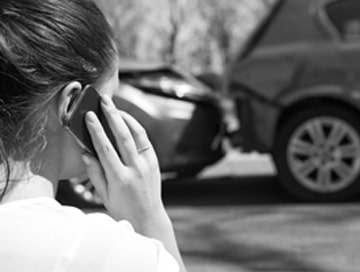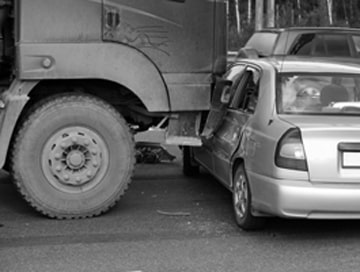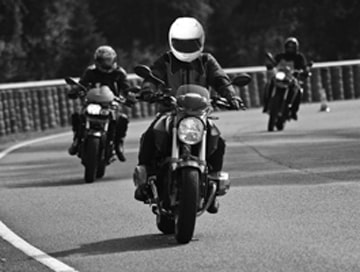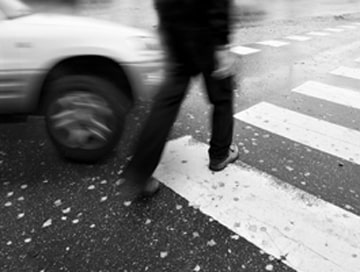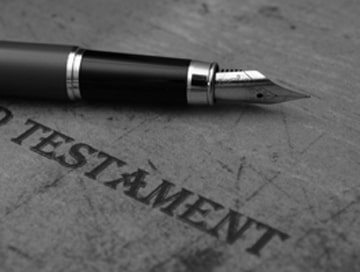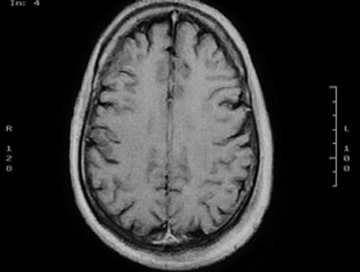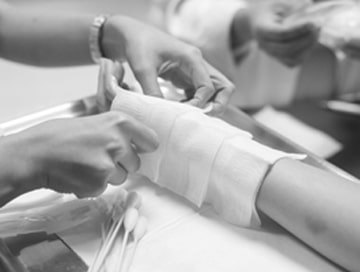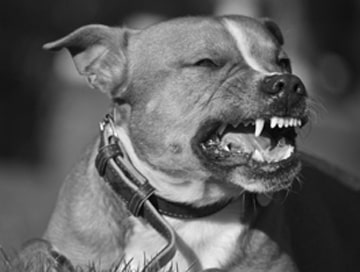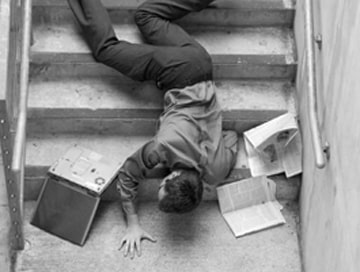One of the first—and most crucial—questions drivers in Bakersfield have following a collision is how to obtain Tesla accident footage.
Multiple angles of high-definition video are captured by Teslas, which makes the footage an effective means of establishing fault, speeding up insurance negotiations, and bolstering personal injury claims.
However, the video isn’t always saved automatically, and it can be more difficult to get back than people think.
The Kuzyk Car Accidents & Personal Injury Lawyers article below provides in-depth details about how Tesla’s camera system operates, the fastest methods for protecting and preserving clips, and what to do if the video’s owner disappears or declines to share it.
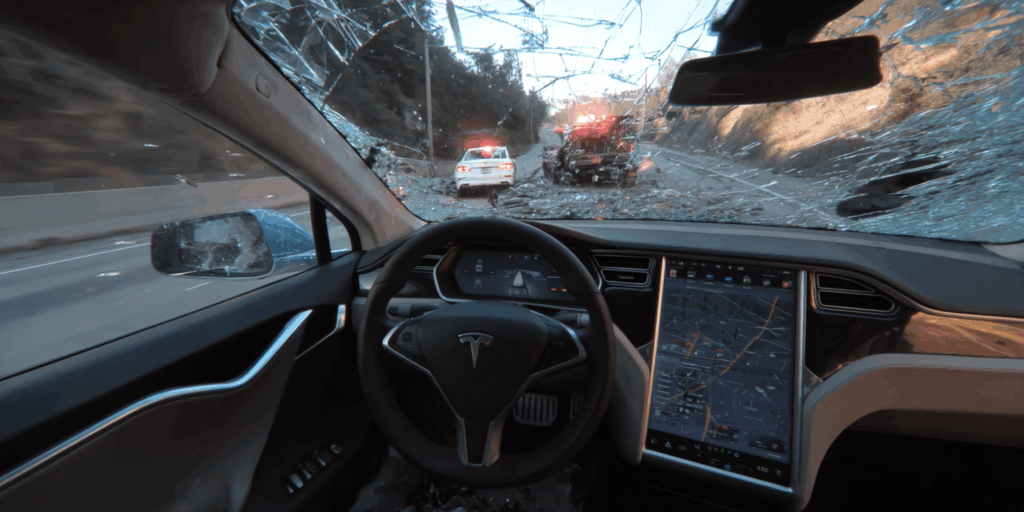
Why Tesla Footage Is So Valuable in California Injury Claims
The camera system on a Tesla functions as a 360-degree eyewitness. In addition to the exterior lenses facing forward, backward, and both sides, more recent models also have an internal cabin camera.
When taken as a whole, these cameras record lane positions, impact angles, traffic-signal status, and driver behavior—evidence that can make or break a Bakersfield injury claim.
Insurers frequently attempt to place some of the blame on crash victims to lower payouts, as California has comparative fault laws. A clear video can stop those strategies.
We have demonstrated that a red light was green, clarified multi-vehicle chain reactions on Highway 99, and shown that opposing drivers made unsafe lane changes using Tesla footage. Adjusters are much more likely to make reasonable settlement offers when they view unquestionable video
How Tesla’s Camera System Records—And Why Clips Sometimes Disappear
Tesla’s dashcam features three primary modes:
Dashcam (Manual save).
While driving, the system continuously buffers footage but saves it permanently only when the driver taps the dashcam icon or uses a voice command. Saved clips are stored in the SavedClips folder on the USB drive and remain there until they are deleted.
Crash auto-save.
If the vehicle experiences a significant impact, Tesla automatically stores approximately ten minutes of footage—before and after the crash—to Saved Clips.
Sentry Mode.
When the car is parked and Sentry Mode is enabled, the cameras activate if motion or impact is detected, saving the video to SentryClips.
Anything not saved into SavedClips or SentryClips lives only in the RecentClips buffer, which overwrites itself about every hour of drive time. If you don’t act quickly, crucial evidence can vanish forever.
Step-by-Step Guide: How to Get Tesla Accident Footage
Remove and Review the USB Drive
If you own the Tesla, shift the vehicle into Park, safely eject the front-console USB drive, and plug it into a computer. Open the TeslaCam folder, then check SavedClips, SentryClips, and finally RecentClips. Copy everything immediately—keeping the original time stamps intact—for your records and your attorney.
Request Cloud Footage from Tesla
Certain 2020-and-newer models automatically upload severe-crash footage to Tesla’s servers. You—or your legal representative—can submit a data request through Tesla’s privacy portal (see Tesla’s instructions on its data-request page). Provide the VIN, crash date, approximate time, and proof of ownership or legal interest. Tesla typically responds within 30 days; however, the response time may be longer if additional verification is required.
Secure Footage from a Third-Party Tesla
If you were hit by someone else’s Tesla, you cannot simply remove their USB. Exchange information at the scene, then send a written preservation request within a specified number of days. If the owner refuses, an attorney can file a subpoena or discovery motion to compel production of the video. Our Bakersfield injury team often obtains court orders within a week when footage is critical.
What to Do When the Video Isn’t There
The video isn’t always accessible when you need it most, even with the best of intentions, such as knowing how to access Tesla accident footage via the vehicle’s integrated systems.
t’s possible that the USB drive was broken, missing, or that the video was accidentally overwritten.
A thorough investigation shifts to alternative evidence sources—which are often time-sensitive—in such challenging circumstances.
City traffic cameras at intersections like Ming Avenue and Real Road sometimes capture high-impact collisions; therefore, public records requests must be filed promptly because footage is often deleted.
Business security systems—such as those found at gas stations, convenience stores, and retail parking lots—often provide wide-angle views of surrounding streets. Preservation letters encourage owners to retain the files.
Event-data recorders in Teslas and other vehicles store speed, brake, and steering data. Forensic engineers can download this information and reconstruct the crash sequence.
Prompt legal action is often the only way to preserve these vital sources before they’re lost or overwritten. If you’ve been in a Tesla accident in Bakersfield and are struggling to secure critical footage, don’t delay.
Contact a Bakersfield personal injury lawyer today to discuss your options and ensure crucial evidence is preserved.
Tesla Recording Modes at a Glance
| Recording Mode | When It Activates | Storage Folder | Typical Retention |
| Dashcam (manual) | Driver taps icon or voice-saves while driving | SavedClips | Permanent until deleted |
| Crash auto-save | Impact above set G-force threshold | SavedClips | Permanent until deleted |
| Sentry Mode | Car parked, motion/impact sensed | SentryClips | Permanent until deleted |
| Recent buffer | Continuous while driving | RecentClips | Overwritten after ~1 hour |
| Cloud upload* | Severe crash in newer models | Tesla servers | Purged after retention window |
Using Tesla Footage in Specific Bakersfield Case Types
It’s not just about general evidence; knowing how to get Tesla accident footage is especially useful for certain types of accident claims that frequently occur on Bakersfield’s roads.
Tesla’s built-in cameras can help clarify complex situations where other types of evidence may not be sufficient.
They do this by recording from multiple angles and continuously.
Freeway Pile-Ups
Chain-reaction crashes happen a lot on busy roads like SR-99 and the Westside Parkway.
Usually, multiple insurance companies blame each other. Tesla’s multi-angle video can record from the front, back, and sides, often providing clear proof that shows who caused the initial impact, even in a chaotic pile-up.
This objective visual evidence can help determine who is at fault, which speeds up settlements by ending long-lasting arguments between the parties involved.
Intersection Disputes
Disagreements over traffic lights often lead to accidents, especially at busy intersections in Bakersfield.
If a driver says the light was green, but your Tesla’s cameras show what the light looked like at the time of the crash, those Tesla clips can end the argument right away.
This clear, objective proof eliminates the “he said, she said” situation.
Personal injury lawyers often use this type of evidence when negotiating with insurance companies and, if necessary, in Kern County court. This makes your claim even stronger.
Severe Injury Claims
Suppose you have a serious injury like whiplash, a traumatic brain injury, or damage to your spinal cord. In that case, it’s crucial to directly connect the medical findings to the force of the crash to obtain the maximum compensation.
Video footage of the crash’s impact can be beneficial in this case because it can help doctors and forensic experts explain how the collision occurred and how specific forces likely caused your injuries.
That visual connection significantly increases the value of the settlement, a strategy that has proven effective in many cases where successful verdicts & settlements were achieved. It helps to make the incident’s severity and its direct connection to your long-term health problems very clear.
Why Work with Kuzyk Car Accidents & Personal Injury Lawyers After a Tesla Accident
When you get into a Tesla accident in Bakersfield, the shock of it all can quickly turn into a complicated legal and logistical problem.
Knowing how to get Tesla accident footage is important, but it’s usually just the first step in a complicated personal injury claim.
Tesla cars have advanced technology and unique data-recording features that make cases more complex than those involving typical car accidents.
This is precisely why having an experienced lawyer on your side is so important.
We at Kuzyk Car Accidents & Personal Injury Lawyers understand the complexities of accidents involving high-tech cars like Teslas and the challenges they present.
Our team knows how to utilize technology, such as TeslaCam footage, and handle the types of accidents that frequently occur in Bakersfield.
We work hard to make sure that every part of your claim is handled with care and expertise, from getting digital evidence to fully understanding the extent of your injuries.
Aggressive Advocacy Against Insurers:
Insurance companies often try to pay as little as possible, even when they are clearly at fault. We promise to protect your rights and fight hard with insurance companies to make sure you get the most money possible for your medical bills, lost wages, pain, and suffering.
You can see our commitment to clients in our verdicts & settlements page and read about our approach through client testimonials.
Local Bakersfield Insight:
Since we are based in Bakersfield, we know a lot about the area’s traffic patterns, common accident hotspots, and the Kern County court system.
This local insight, combined with our experience in various accident types—from Bakersfield auto accidents to Bakersfield truck accidents and Bakersfield motorcycle accidents—gives our clients a distinct advantage.
Client-Centered Approach:
We prioritize your well-being.
While we handle all the complex legal aspects, you can focus on your recovery.
Our goal is to make the process as stress-free as possible, keeping you informed every step of the way. You can learn more about our firm on our company profile.
Common Bakersfield Accidents and Tesla’s Role
Like any other growing city, Bakersfield has its fair share of different car accidents. Tesla’s safety features receive high marks, but no car is entirely immune to crashes.
Knowing the most common types of accidents in our area and how Tesla’s features, such as their cameras, affect them can demonstrate the importance of seeking expert legal advice.
Reports on the causes of car accidents in Bakersfield and other parts of California say that some of the most common types of crashes are:
Rear-End Collisions:
Rear-end crashes are often caused by driving while distracted or following too closely. Tesla’s rear-facing cameras and dashcam features can clearly show tailgating or sudden braking, which can help determine who is at fault in these everyday situations.
Intersection Accidents:
People often run red lights or fail to yield at intersections, which can lead to T-bone or side-impact crashes. Tesla’s side and front cameras can usually show the state of the traffic signal and the approach of the other car, which is substantial evidence in these cases.
People often say that the intersections of Ming Avenue and Real Road, or Gosford Road and Ming Avenue, have a high incidence of accidents in Bakersfield.
Lane Change/Sideswipe Accidents:
These often occur because of blind spots or changing lanes in the wrong direction. Sometimes, Tesla’s side repeater cameras can provide a different view that helps you determine who is at fault in these challenging situations.
Multi-Car Pile-Ups:
These crashes, which frequently occur on highways like SR-99 during rush hour, can be particularly complex. As we discussed, Tesla’s multiple camera angles can help determine who the first careless driver was in these chaotic situations. This is crucial for deciding whose insurance pays in a multi-car accident.
Tesla cars are equipped with advanced safety features that reduce the risk of accidents in certain situations, such as when Autopilot is engaged.
But accidents still happen. When they do, the large amount of data and video that your Tesla collects can be invaluable for your personal injury claim. However, to access, maintain, and utilize this data, along with regular evidence, you need to have a thorough understanding of both the law and technology.
Frequently Asked Questions
1. Does Tesla record all the time while driving?
It continuously buffers video but only saves permanently when triggered manually or by an event such as a crash.
2. How long do I have beforethe dashcam footage is overwritten?
The RecentClips folder loops after roughly one hour of drive time; SavedClips and SentryClips stay until deleted or the USB fills up.
3. Can police or lawyers get Tesla footage without the owner’s consent?
Yes. Police can use a warrant, and civil attorneys can obtain a subpoena during litigation.
4. Will Tesla footage include cabin-camera video?
Interior footage is saved only in inevitable crashes and may require additional court approval to access, but it can be crucial for proving distraction or impairment.
5. What if I didn’t have a USB installed—am I out of luck?
Not necessarily. Severe-impact uploads, traffic cams, and third-party surveillance can still provide key evidence. Act fast and consult an attorney.
Act Quickly—Let Kuzyk Car Accidents & Personal Injury Lawyers Preserve Your Evidence
Dashcam buffers erase themselves, witnesses disappear, and digital files get overwritten. The sooner you act, the better your chance of securing the footage that could determine the outcome of your Bakersfield injury claim.
Kuzyk Car Accidents & Personal Injury Lawyers has recovered critical video footage from Teslas for clients injured in everything from routine fender-benders to catastrophic truck collisions. Explore our client testimonials to see how early evidence retrieval turned cases around.Need help right now? Reach our Bakersfield office through our contact page or call for a free consultation. We’ll show you exactly how to get Tesla accident footage—and how to use it to pursue the compensation you deserve.
